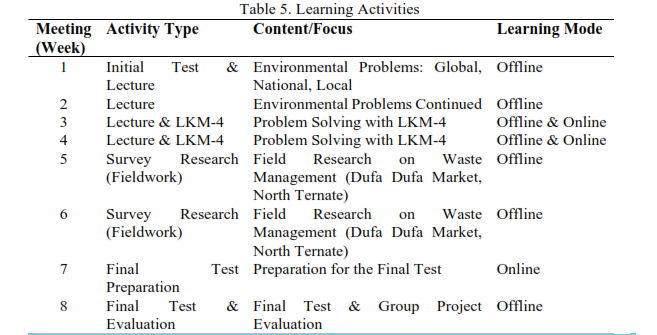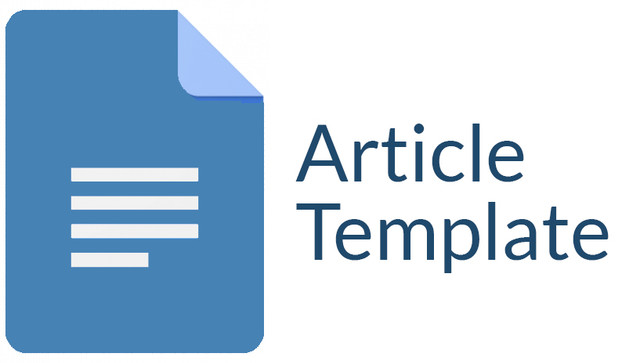Developing Preservice Biology Teachers' Creative Thinking Skills Through Integrating E-Books into Problem-Based Learning
DOI:
https://doi.org/10.30736/seaj.v6i2.1082Keywords:
creative thinking skills, problem based learning, preservice biology teacher, E-bookAbstract
Developing Preservice Biology Teachers' Creative Thinking Skills Through Integrating E-Books into Problem-Based Learning. This research aims to find a low solution quality of teachers in North Maluku Province, Indonesia. One alternative proposed is integrating e-books into problem-based learning to see the impact on preservice biology teachers' creative thinking skills. Pre-experiment-bookstall research methodology and one group's pretest-posttest design are used. This research was carried out in 2024, and the research location was the Study Program for Biology Education, University of Khairun, Indonesia. The research subjects were preservice biology teachers. The selection of research subjects was based on the initial ability level (high, medium, low), so the number of research subjects was 6 (2 groups). The research results concluded that integrating e-books into a problem-based learning model was very effective in improving the creative thinking skills of preservice biology teachers. Further research also makes it possible to see the differences in the effect of providing learning activity links (e-books) before or after offline lectures are conducted.
Downloads
References
Adawiyah, R., A. Harjono, G. Gunawan, and H. Hermansyah. 2019. “Interactive E-Book of Physics to Increase Students’ Creative Thinking Skills on Rotational Dynamics Concept.” Journal of Physics: Conference Series 1153(1).
Agustin, S., and P. Razi. 2023. “Validity of E-Book Based on Problem-Based Learning with Higher Order Thinking Skills Oriented for Senior High School.” in Journal of Physics: Conference Series.
Arends, R. I., and A. Kilcher. 2010. Teaching for Student Learning: Becoming an Accomplished Teacher. New York: Routledge.
Awaly, M. A., P. Sinaga, and L. Hasanah. 2023. “The Effectiveness of Multiple Representation Electronic Book Design in Improving Critical Thinking Skills and Creative Thinking Skills of High School Students.” European Modern Studies Journal 7(3).
Campbell, D. T., and J. C. Stanley. 1963. Experimental and Quasi Experimental Design for Research. Boston: Houghton Mifflin Company.
Chew, Fong Penga, and Khai Ling Eau. 2017. “Creativity Teaching through E-Book Reading Program among the Children in Malaysia.” Advanced Science Lettera 23(3):2043–47.
Duch, B. J., Groh S. E., and D. E. Allen. 2001. The Power of Problem-Based Learning. Sterling: Stylus Publishing, Inc.
Ernawati, Margaret Dwi Wiwik, Muhammad Rusdi, Asrial Asrial, Muhaimin Muhaimin, Mashelin Wulandari, and Shella Maryani. 2022. “Analysis of Problem Based Learning in the Scaffolding Design: Students’ Creative-Thinking Skills.” Cypriot Journal of Educational Sciences 17(7):2333–48. doi: 10.18844/cjes.v17i7.7551.
Glass, G. V., and K. D. Hopkins. 1984. Statistical Methods in Education and Psychology. 2nd ed. Englewood Cliffs, NJ: Prentice-Hall.
Hake, Richard. 1998. “Interactive-Engagement versus Traditional Methods: A Six-Thousand-Student Survey of Mechanics Test Data for Introductory Physics Courses.” American Journal of Physics 66(1):64–74. doi: 10.1119/1.18809.
Han, Jingjing, Lina Zhang, Liucai Yang, Yougen Luo, Ruiqin Yao, and Xuebin Qu. 2024. “The Implementation of an Active Inquiry Learning Centered ‘7E’ Teaching Mode in the Cell Biology Course Enhances the Learning Effects of Postgraduate Students.” Biochemistry and Molecular Biology Education 52(3):323–31.
Hasbiyati, H., D. Sudiarti, and S. R. Hikamah. 2019. “The Effectiveness of Using Smartphone-Based e-Book in Increasing Students’ Learning Outcomes in Science Learning.” IOP Conference Series: Earth and Environmental Science 243(1).
Hemker, H. C. 2001. “Critical Perceptions on Problem-Based Learning.” European Review 9(3):269–274.
Karpicke, J. D., A. C. Butler, and H. L. Roediger. 2009. “Metacognitive Strategies in Student Learning: Do Students Practise Retrieval When They Study on Their Own?” Memory 17(4):471–79.

Downloads
Published
How to Cite
Issue
Section
License
Copyright (c) 2024 Nuraini Sirajudin, Ismail Tolla, Muharram

This work is licensed under a Creative Commons Attribution-ShareAlike 4.0 International License.
Authors who publish with this journal agree to the following terms:
- Authors retain copyright and grant the journal right of first publication with the work simultaneously licensed under a Creative Commons Attribution-ShareAlike 4.0 International License that allows others to share the work with an acknowledgment of the work's authorship and initial publication in this journal.
- Authors are able to enter into separate, additional contractual arrangements for the non-exclusive distribution of the journal's published version of the work (e.g., post it to an institutional repository or publish it in a book), with an acknowledgment of its initial publication in this journal.
- Authors are permitted and encouraged to post their work online (e.g., in institutional repositories or on their website) prior to and during the submission process, as it can lead to productive exchanges, as well as earlier and greater citation of published work (See The Effect of Open Access).

This work is licensed under a Creative Commons Attribution-ShareAlike 4.0 International License.









